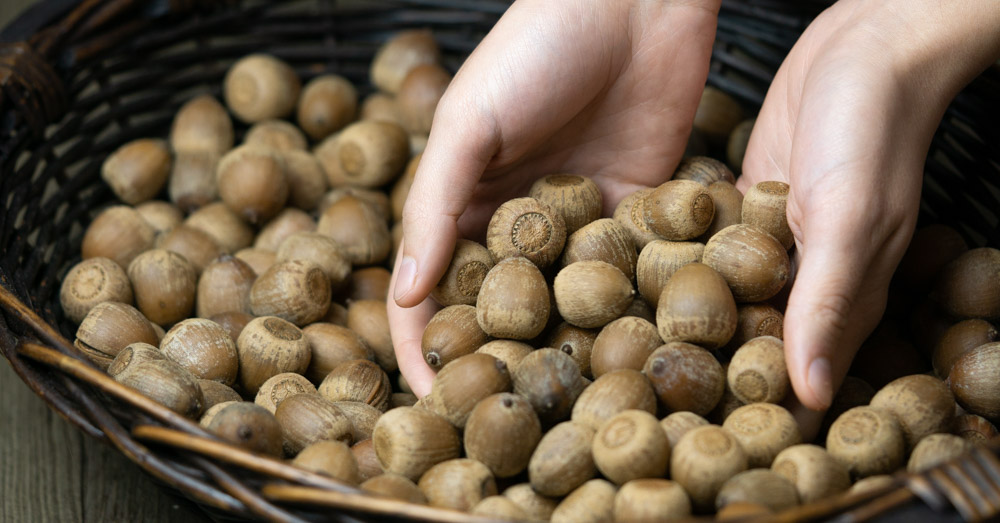Acorn Time!
Did you know acorns have sustained humans for thousands of years? From ancient Native Americans to European and Korean cultures, these nuts were more than just survival food—they were a staple, rich in nutrients and history. Today, I’ll show you how to harvest and prepare acorns just as our ancestors did, offering you not only sustenance but also a deep connection to nature.
Step 1: Gather Acorns
First, gather your acorns. Look for healthy, ripe acorns around oak trees. Indigenous peoples often collected them in the fall, ensuring they picked the best ones for food. Make sure to avoid acorns with cracks or mold.
Why it matters today: Acorns offer a sustainable, nutrient-packed food source that ties us to our ancestral roots. Plus, they’re free and abundant!
Step 2: Dry the Acorns
Once gathered, dry them to preserve their longevity. Ancient civilizations used underground storage pits or clay jars for this purpose. Drying also makes cracking them easier, just as it did for our ancestors.
Urgency Tip: If you don’t dry your acorns properly, they can spoil quickly, meaning you’ll miss out on this nutritious bounty!
Step 3: Crack the Acorns
Crack the acorns open using a nutcracker or rock. Ancient peoples used stone anvils and hammers to get to the nutrient-dense kernel inside. Be gentle to avoid crushing the meat.
Pro Tip: The process of cracking acorns connects you directly with techniques humans have used for millennia. It’s a hands-on reminder of how deeply we’ve relied on nature for sustenance.
Step 4: Grind the Acorns
After cracking, remove the shells and grind the acorn meat into flour using a mortar and pestle or a modern grinder. This process was essential in ancient times for transforming acorns into edible forms like bread or porridge.
Actionable Advice: Grind the acorns as fine as possible for the best results. The smoother the flour, the more versatile it is for baking and cooking.
Step 5: Leach the Tannins
Acorns contain bitter tannins, which need to be removed through leaching. There are two ways to do this:
- Hot Leaching: Boil and strain the acorn flour several times. Indigenous peoples often used clay pots or stones.
- Cold Leaching: Soak the flour in cold water for an extended period, mimicking ancient Korean practices.
Why it’s important now: Removing the tannins makes the acorns palatable and safe to eat. Skipping this step will leave you with bitter flour and may cause digestive discomfort.
Step 6: Eat!
Once leached, the acorn flour is ready to use! Bake bread, make pancakes, or add it to soups. In Korea, acorn jelly (dotori-muk) is still a popular dish today.
Fun Fact: Our ancestors used acorns for nutrition, just like we can today. By incorporating them into your meals, you’re reviving an ancient tradition of living in harmony with nature.
Why Eat Acorns Today? Acorns are packed with essential nutrients like vitamins A and C, potassium, magnesium, and calcium. They also contain antioxidants that fight inflammation. Harvesting and eating acorns not only provides these health benefits but also offers a way to connect with ancestral traditions.
Ready to Try It? Now’s the perfect time to give acorns a try! Start gathering, drying, and grinding today—your ancestors would be proud. Want to see the process in action? Watch this video to learn more.
Question for You: Have you ever foraged for wild foods like acorns? What was your experience like? Share your stories in the comments!

